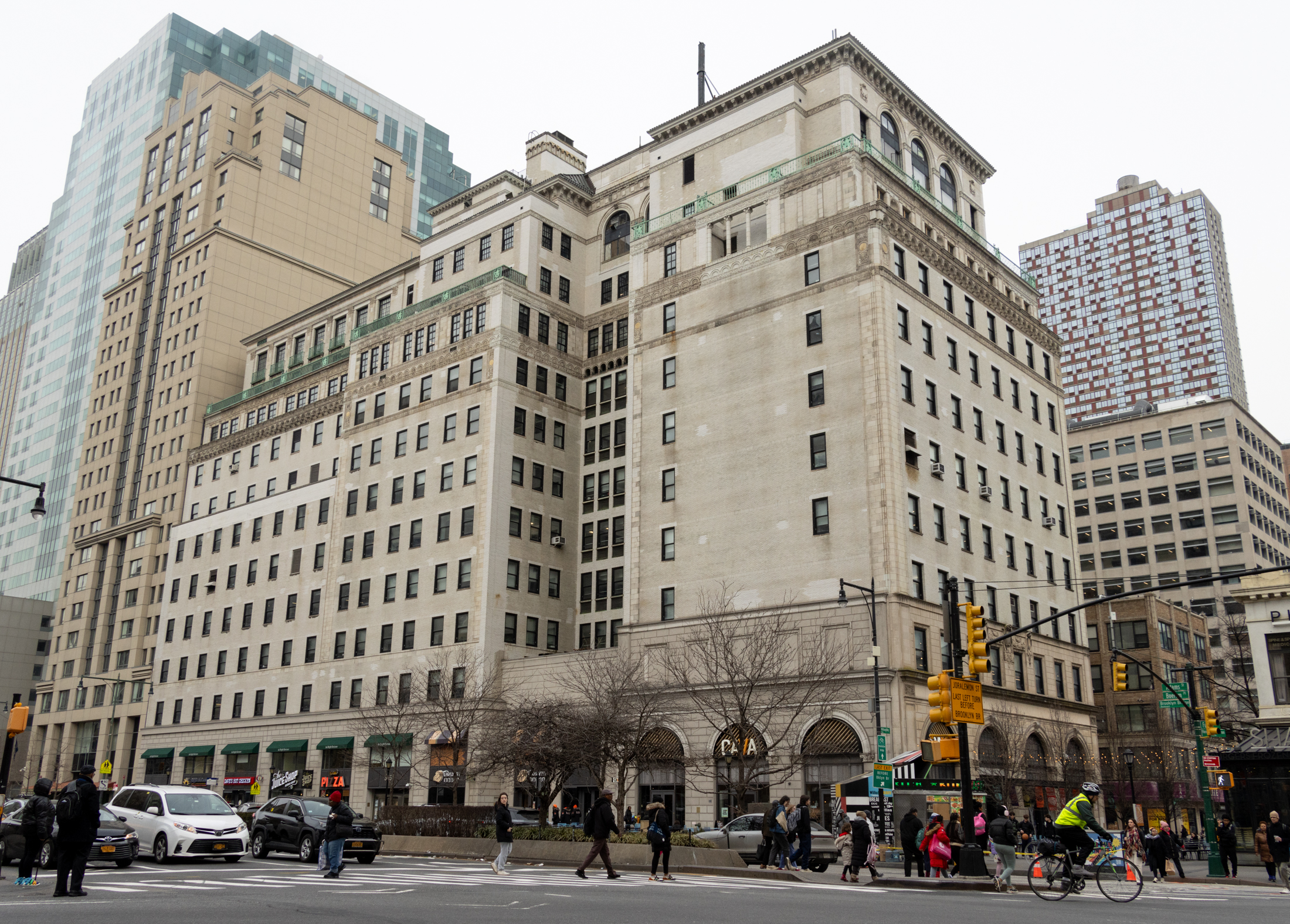Building of the Day: 75 Hicks Street
The BOTD is a no-frills look at interesting structures of all types and from all neighborhoods. There will be old, new, important, forgotten, public, private, good and bad. Whatever strikes our fancy. We hope you enjoy. Address: 75 Hicks Street at Orange St. (Official Address, church building itself is on Orange St.) Name: Plymouth Church…

The BOTD is a no-frills look at interesting structures of all types and from all neighborhoods. There will be old, new, important, forgotten, public, private, good and bad. Whatever strikes our fancy. We hope you enjoy.
Address: 75 Hicks Street at Orange St. (Official Address, church building itself is on Orange St.)
Name: Plymouth Church of the Pilgrims Neighborhood: Brooklyn Heights
Year Built: Church-1849, Parish House and arcade-1914
Architectural Style: Church-Italianate, Parish house-Beaux-Arts influenced Georgian
Architects: Church-Joseph C. Wells. Parish house and arcade-Woodruff Leeming
Landmarked: Yes
It’s BOTD Church Week. Some churches are renowned for their architectural beauty; their soaring spires, stained glass windows, exterior and interior ornament, and some are national treasures because of what transpired inside their perhaps not as impressive seeming walls.
That is certainly the case here. Many of Brooklyn Heights’ citizens were transplanted New Englanders. They founded Plymouth Church in 1847, in the Congregational manner, with a simple building, and a simple order of worship.
The first Plymouth Church was a block away, on Cranberry St, but when it was damaged in a fire, their founding preacher, Henry Ward Beecher, had a new church in plain brownstone built behind it, on Orange St. The architect, Joseph Wells, was a respected church architect, but he deferred to Beecher who actually designed the interior.
This was to be a preaching auditorium, and Henry Ward Beecher was filling the pews with his passionate abolitionist oratory. This would be the first “theatre plan” church, and can seat 2,800 people. Beecher was so good, he filled the church to overflowing every Sunday, thundering his opposition to slavery, raising money for abolitionist causes, and helping escaped slaves on their way to freedom along the Underground Railroad.
He invited influential speakers here, including Frederick Douglass, Sojourner Truth and William Lloyd Garrison. Beecher was also the first to assemble what is now a staple in every American church, a hymnal. The Plymouth Collection, first published in 1855, was the first church hymnal to have words and music on the same page.
Henry Ward Beecher would remain pastor here until his death in 1887, one of the most influential men of the 19th century. In addition to its ground breaking seating arrangement, the church is known for its stained glass.
It is the repository of some of the finest work of two of the giants of American stained glass: Frederick Lamb and Louis Comfort Tiffany. The Lamb glass was made for this church. When the Church of the Pilgrims, another Heights church, merged with Plymouth, they brought their Tiffany windows with them.
The large parish house and adjoining arcade, which forms an interior garden between the church and parish house, was designed in 1914 by Woodruff Leeming, who worked with Heinz and LaFarge on the Cathedral of St. John the Divine.
Plymouth Church merged with The Church of the Pilgrims, the first Congregational Church in Brooklyn, formerly on the corner of Henry and Remsen, in 1934. That Richard Upjohn church still stands, and today is the Our Lady of Lebanon Maronite Catholic Church.
[Photos by Suzanne Spellen]














I bet you do, douchebag.
😉
I think it’s more fun when anonymous bloggers call each other “douchebags”
Nicest thing anyone’s ever said to me online.
Back at you, BoerumHill.
You are a rare bird, infinitejester – an semi-anonymous internet poster who admitted he was wrong. Truly a sign the apocalypse is nigh. Or blame it on the season.
Or maybe you’re a good guy yourself.
And to you, BH! Good sport.
Thanks for this Montrose.
by Minard: “they could have built anything they wanted but they wanted to show-off by not showing off.”
I like your descriptions Minard.
It’s all good i-j
Happy Holidays
First I’d heard of the plastering I mean, which I admit, makes it “extensive.”
I just called the church – 6 years ago. New plaster and brick pointing outside, painting inside, new carpet, new roof. I disagreed because it was the first I’d heard of it. You are right but the Sancutary is not considered modern by any means.